Non-Cardiac Chest Pain & How Chiropractic Can Help
 Having pain in your chest can be scary—most people immediately assume the pain is related to a heart attack and rush to the emergency room. While this isn’t a bad idea since it’s better to err on the side of caution, heart attacks typically only cause about 5% of total chest pain. If you experience chest pain that has been confirmed as non-cardiac, it’s important to explore all your options to resolve the pain and get to the root of the problem. Dr. Ronnie Bolar of Vital Life Chiropractic has experience with non-cardiac chest pain and can help you find relief with neurologically-based chiropractic care.
Having pain in your chest can be scary—most people immediately assume the pain is related to a heart attack and rush to the emergency room. While this isn’t a bad idea since it’s better to err on the side of caution, heart attacks typically only cause about 5% of total chest pain. If you experience chest pain that has been confirmed as non-cardiac, it’s important to explore all your options to resolve the pain and get to the root of the problem. Dr. Ronnie Bolar of Vital Life Chiropractic has experience with non-cardiac chest pain and can help you find relief with neurologically-based chiropractic care.
Getting to the Root Cause of the Pain
One of the aims of chiropractic care is to find the true origin of discomfort and dysfunction. Dr. Bolar is not satisfied with just treating symptoms or putting a hypothetical band-aid on a problem for temporary, short-term relief. Instead, he wants to figure out what is causing the non-cardiac chest pain that you’re experiencing so that he can help resolve the issue fully and permanently. Most commonly, the cause of non-cardiac chest pain is related to the ribs. When the rib cage is out of alignment or ribs are displaced, this can bring about muscle tightness and pain in the chest. Lower back problems can also cause ribs to be displaced or can bring about muscle spasms and pain in the chest. Tightness in any muscles or muscle groups near to the chest can also cause pain in this area.
Most commonly, muscle issues that result in chest pain are due to misalignments of the spine. When a vertebra is shifted slightly to one side or another, or if it is a little twisted or turned, the muscles on either side of […]



 If you’ve been involved in a slip and fall accident, you likely have a lot of things on your mind. You’re thinking about your physical pain levels, insurance costs, and doctors’ appointments. If your accident happened at work, you’re dealing with workers’ compensation claims, conversations with your employer, and figuring out how to make ends meet while you’re out of work. While many traditional treatment methods are utilized to speed up healing after a slip and fall accident, you may be surprised to find out that a chiropractor can play an important role in your healing as well.
If you’ve been involved in a slip and fall accident, you likely have a lot of things on your mind. You’re thinking about your physical pain levels, insurance costs, and doctors’ appointments. If your accident happened at work, you’re dealing with workers’ compensation claims, conversations with your employer, and figuring out how to make ends meet while you’re out of work. While many traditional treatment methods are utilized to speed up healing after a slip and fall accident, you may be surprised to find out that a chiropractor can play an important role in your healing as well.
 If you’re like most people, the past few months have brought about many changes to your work environment. Many people across the country have been working from home for weeks, and many of us will continue to do so for the foreseeable future. Whether you’re figuring out how to optimize your home office, are struggling to set up a productive workspace in your kitchen, or are still in the office on a daily or weekly basis, you should be paying attention to how helpful your work environment is when it comes to your productivity.
If you’re like most people, the past few months have brought about many changes to your work environment. Many people across the country have been working from home for weeks, and many of us will continue to do so for the foreseeable future. Whether you’re figuring out how to optimize your home office, are struggling to set up a productive workspace in your kitchen, or are still in the office on a daily or weekly basis, you should be paying attention to how helpful your work environment is when it comes to your productivity.
 One of the biggest risks of injury as we enter our golden years is falling. After the age of 65, the risk of falling rises significantly. In fact, 1 in 3 people over the age of 65 experience a fall each year and about 25% of them experience serious injuries due to a fall. The statistics related to older adults falling can be scary in and of themselves. Not only does the older population have to worry about serious injuries, surgeries, and hospital stays from falling, but they also experience a psychological
One of the biggest risks of injury as we enter our golden years is falling. After the age of 65, the risk of falling rises significantly. In fact, 1 in 3 people over the age of 65 experience a fall each year and about 25% of them experience serious injuries due to a fall. The statistics related to older adults falling can be scary in and of themselves. Not only does the older population have to worry about serious injuries, surgeries, and hospital stays from falling, but they also experience a psychological 
 Have you been in a car crash? Are you now experiencing neck or back pain? You are most likely experiencing whiplash pain as a result of the accident. No matter how small or minor your car accident may have been, if there is damage to the car, there is damage to your body. Whiplash can also occur from other issues such as banging or shaking your head too much. Symptoms of whiplash can be quite painful, to the point that you can’t carry out daily tasks because you can’t turn your head from side to side. Before the pain worsens, seek chiropractic care from a Lithia Springs chiropractor for whiplash relief after a car accident or other injury.
Have you been in a car crash? Are you now experiencing neck or back pain? You are most likely experiencing whiplash pain as a result of the accident. No matter how small or minor your car accident may have been, if there is damage to the car, there is damage to your body. Whiplash can also occur from other issues such as banging or shaking your head too much. Symptoms of whiplash can be quite painful, to the point that you can’t carry out daily tasks because you can’t turn your head from side to side. Before the pain worsens, seek chiropractic care from a Lithia Springs chiropractor for whiplash relief after a car accident or other injury.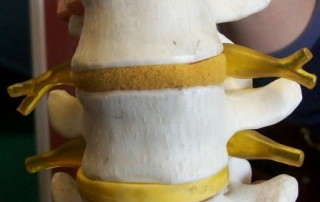
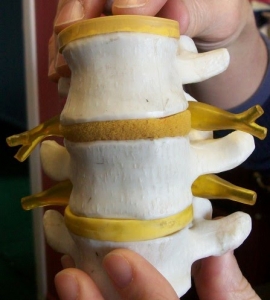 Did you wake up this morning with a terrible pain in your back? Do you feel like you pulled something while moving a certain way or playing a sport? The pain you may be experiencing could be a pinched nerve. There are several things that may cause a pinched nerve, though the reason they occur is mainly because of a subluxation, or misalignment of the spine. A
Did you wake up this morning with a terrible pain in your back? Do you feel like you pulled something while moving a certain way or playing a sport? The pain you may be experiencing could be a pinched nerve. There are several things that may cause a pinched nerve, though the reason they occur is mainly because of a subluxation, or misalignment of the spine. A 

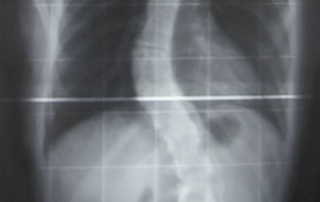
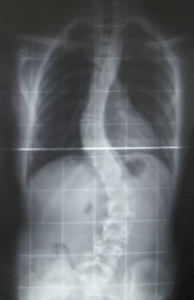 An abnormal curve of the spine is known as scoliosis. Any twisting of the spine or improper curve of the spine when looking from a front or back view is considered a form of scoliosis. Although there are many varieties of spinal curvatures that could contribute to scoliosis, the most common form involves a side to side curve instead of a straight spine. This common type of scoliosis is called idiopathic scoliosis and often occurs in the adolescent years (ages 10-14), but it can occur at any age. Other forms of scoliosis include neuromuscular or myopathic scoliosis, degenerative scoliosis, or congenital scoliosis. No matter what type of scoliosis people suffer from, it can be both painful and even debilitating. Before scoliosis worsens to the point of causing health issues, find out how a chiropractor can help.
An abnormal curve of the spine is known as scoliosis. Any twisting of the spine or improper curve of the spine when looking from a front or back view is considered a form of scoliosis. Although there are many varieties of spinal curvatures that could contribute to scoliosis, the most common form involves a side to side curve instead of a straight spine. This common type of scoliosis is called idiopathic scoliosis and often occurs in the adolescent years (ages 10-14), but it can occur at any age. Other forms of scoliosis include neuromuscular or myopathic scoliosis, degenerative scoliosis, or congenital scoliosis. No matter what type of scoliosis people suffer from, it can be both painful and even debilitating. Before scoliosis worsens to the point of causing health issues, find out how a chiropractor can help.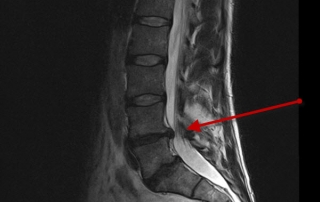
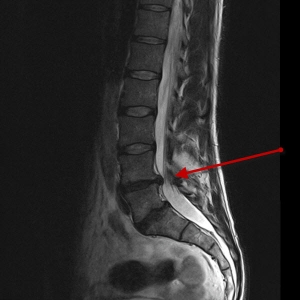 A herniated disc is caused when a disc protrudes out from the spine. Spinal discs are rubbery pads that support your vertebrae, and when even one is out of place and pressing on a nerve, it can cause significant amounts of pain and other health problems. Herniated discs can occur in many ways, such as from playing sports, stretching or twisting incorrectly, being in a car accident, improper lifting techniques, or simply getting older. No matter what the cause, chiropractic care offers relief from the severe pain herniated discs cause and can even help you avoid surgery or other extreme medical measures.
A herniated disc is caused when a disc protrudes out from the spine. Spinal discs are rubbery pads that support your vertebrae, and when even one is out of place and pressing on a nerve, it can cause significant amounts of pain and other health problems. Herniated discs can occur in many ways, such as from playing sports, stretching or twisting incorrectly, being in a car accident, improper lifting techniques, or simply getting older. No matter what the cause, chiropractic care offers relief from the severe pain herniated discs cause and can even help you avoid surgery or other extreme medical measures.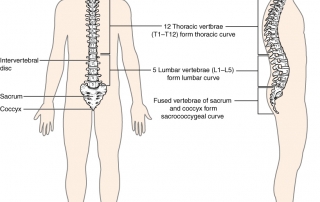
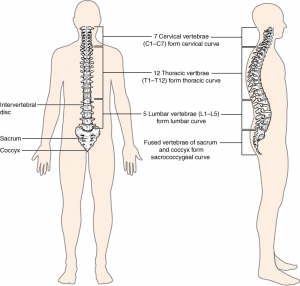 It is no secret that chiropractic care is used to treat all kinds of ailments beyond just the spine and musculoskeletal system. But many people seek chiropractors primarily for the treatment of back or neck pain or various spinal disorders such as scoliosis (C- or S-shaped spinal curve), lordosis (curved lower back), or kyphosis (abnormally rounded upper back). However, very few people are aware that a healthy adult spine, running from the base of the skull to the pelvis, when viewed from the side should have a gentle S-shaped curve. The neck and lower back regions are concave and the thoracic and sacral regions have a convex curve.
It is no secret that chiropractic care is used to treat all kinds of ailments beyond just the spine and musculoskeletal system. But many people seek chiropractors primarily for the treatment of back or neck pain or various spinal disorders such as scoliosis (C- or S-shaped spinal curve), lordosis (curved lower back), or kyphosis (abnormally rounded upper back). However, very few people are aware that a healthy adult spine, running from the base of the skull to the pelvis, when viewed from the side should have a gentle S-shaped curve. The neck and lower back regions are concave and the thoracic and sacral regions have a convex curve.